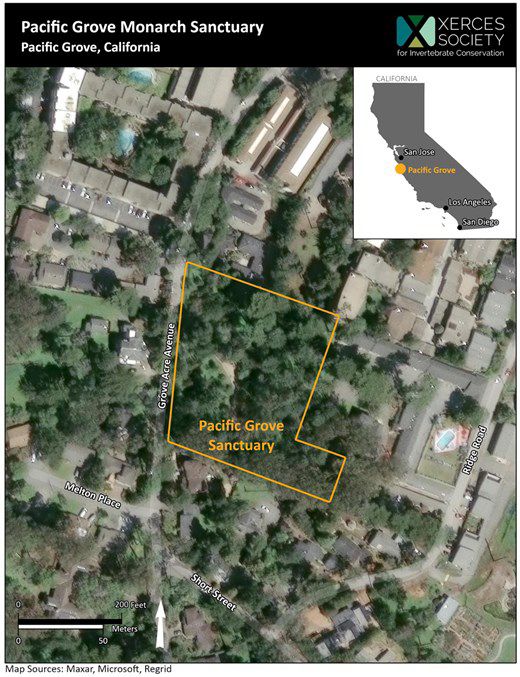Jon Sauer
@hoooydoopy.bsky.social
Analytical Chemist, Mass spec of all flavors, I work in industry and occasionally dip into academic stuff
Trying to think of any other consumer product that brings in WW1 lore to the buyers mind. Did the red baron even like pizza?

November 9, 2025 at 5:35 AM
Trying to think of any other consumer product that brings in WW1 lore to the buyers mind. Did the red baron even like pizza?
From a Finnigan LC-MSQ to an ethanol cluster CIMS in 6hrs, our fifth unit now



October 25, 2025 at 11:45 PM
From a Finnigan LC-MSQ to an ethanol cluster CIMS in 6hrs, our fifth unit now
Casually riding shotgun with a quad in my lap

October 25, 2025 at 8:01 PM
Casually riding shotgun with a quad in my lap
If you’re in a hairy situation, how egregious is an injection-volume based cal curve for LC-MS? Is there any good systematic study on this?
October 3, 2025 at 4:39 PM
If you’re in a hairy situation, how egregious is an injection-volume based cal curve for LC-MS? Is there any good systematic study on this?
Reposted by Jon Sauer
Interactions of Aqueous Microdroplets and Mineral Particles Drive Fluorine-First Perfluoroalkyl Mineralization #JACS #MassSpec pubs.acs.org/doi/10.1021/...

Interactions of Aqueous Microdroplets and Mineral Particles Drive Fluorine-First Perfluoroalkyl Mineralization
Anthropogenic perfluoroalkyl and polyfluoroalkyl substances (PFAS) are pervasive contaminants subject to increasingly stringent regulatory thresholds in water resources. Current nonthermal defluorination strategies face critical limitations, including incomplete mineralization, yielding persistent short-chain PFAS byproducts, and residual fluoride ions, thereby hindering compliance with water quality standards. Herein, we demonstrate that wollastonite-bearing microdroplets prioritize defluorination over C–C scission in perfluoroalkyl chains through liquid–solid–gas triple-phase contact electrification. This process results in complete perfluorooctanoic acid mineralization with hardly detectable shorter-chain anionic PFAS byproducts, as confirmed by Fourier transform ion cyclotron resonance mass spectrometry. Microdroplet-mediated weathering of wollastonite triggers the formation of CaF2–SiO2 interfacial structures through Si–F–Ca bonding interactions, thereby enabling fluoride immobilization with negligible leaching. This work reveals that atmospheric clouds containing mineral particles intrinsically exhibit a self-cleansing capacity toward PFAS contaminants, advancing cloud-inspired interfacial engineering for next-generation water purification systems.
pubs.acs.org
August 26, 2025 at 5:36 PM
Interactions of Aqueous Microdroplets and Mineral Particles Drive Fluorine-First Perfluoroalkyl Mineralization #JACS #MassSpec pubs.acs.org/doi/10.1021/...
Newest masshunter now has social media style notifications in the acq bar. Next update will have reels and stories.
🎺Linda upvoted your peak.
🎺Linda commented on your peak: “lol”
🎺Steve re-peaked your peak.
🎺Linda upvoted your peak.
🎺Linda commented on your peak: “lol”
🎺Steve re-peaked your peak.

August 25, 2025 at 5:14 PM
Newest masshunter now has social media style notifications in the acq bar. Next update will have reels and stories.
🎺Linda upvoted your peak.
🎺Linda commented on your peak: “lol”
🎺Steve re-peaked your peak.
🎺Linda upvoted your peak.
🎺Linda commented on your peak: “lol”
🎺Steve re-peaked your peak.
If you do MS of phosphate-containing molecules enough, you start to see 79.9 everywhere
August 5, 2025 at 11:06 PM
If you do MS of phosphate-containing molecules enough, you start to see 79.9 everywhere
Reposted by Jon Sauer
🦋 Mass monarch die-off linked to pesticides
New research confirms that a 2024 monarch butterfly die-off in California was likely caused by pesticide exposure, as each butterfly tested carried an average of seven pesticides.
🔗 academic.oup.com/etc/advance-...
#Pesticides #SciComm 🧪
New research confirms that a 2024 monarch butterfly die-off in California was likely caused by pesticide exposure, as each butterfly tested carried an average of seven pesticides.
🔗 academic.oup.com/etc/advance-...
#Pesticides #SciComm 🧪

Pyrethroid insecticides implicated in mass mortality of monarch butterflies at an overwintering site in California
Abstract. Since the 1980s, monarch butterfly (Danaus plexippus plexippus) populations across North America have declined by 80%–95%. Although several studi
academic.oup.com
August 2, 2025 at 8:18 PM
🦋 Mass monarch die-off linked to pesticides
New research confirms that a 2024 monarch butterfly die-off in California was likely caused by pesticide exposure, as each butterfly tested carried an average of seven pesticides.
🔗 academic.oup.com/etc/advance-...
#Pesticides #SciComm 🧪
New research confirms that a 2024 monarch butterfly die-off in California was likely caused by pesticide exposure, as each butterfly tested carried an average of seven pesticides.
🔗 academic.oup.com/etc/advance-...
#Pesticides #SciComm 🧪
The dopamine spread on peaches is maybe the widest for all fruits. Bad ones are offensive, good ones are euphoric
August 1, 2025 at 10:46 PM
The dopamine spread on peaches is maybe the widest for all fruits. Bad ones are offensive, good ones are euphoric
Reposted by Jon Sauer
Masked ICE agents hauled workers out of a pizza place in my Massachusetts town today.
Do I feel safer? No, the opposite. Do I feel wealthier? Not a bit. Do I feel that justice is being served? No, not that, either.
I’m mostly infuriated by armed, masked men roaming around and grabbing people.
Do I feel safer? No, the opposite. Do I feel wealthier? Not a bit. Do I feel that justice is being served? No, not that, either.
I’m mostly infuriated by armed, masked men roaming around and grabbing people.
August 1, 2025 at 9:23 PM
Masked ICE agents hauled workers out of a pizza place in my Massachusetts town today.
Do I feel safer? No, the opposite. Do I feel wealthier? Not a bit. Do I feel that justice is being served? No, not that, either.
I’m mostly infuriated by armed, masked men roaming around and grabbing people.
Do I feel safer? No, the opposite. Do I feel wealthier? Not a bit. Do I feel that justice is being served? No, not that, either.
I’m mostly infuriated by armed, masked men roaming around and grabbing people.
Important text from my Fiancée this morning

July 25, 2025 at 4:07 PM
Important text from my Fiancée this morning
Concept threw me off at first but good idea, low hanging fruit
Odor substances and correlated chemical risks in children's tents: A GC-Orbitrap HRMS-based non-targeted analysis #JChromA www.sciencedirect.com/science/arti...

Odor substances and correlated chemical risks in children's tents: A GC-Orbitrap HRMS-based non-targeted analysis
Children's tents provide small enclosed spaces that are in close contact with children, making it essential to identify odorants and potential chemica…
www.sciencedirect.com
July 25, 2025 at 4:34 AM
Concept threw me off at first but good idea, low hanging fruit
While you were partying, I studied 𝖙𝖍𝖊 𝖇𝖑𝖆𝖉𝖊
Coated Blade Spray-Mass Spectrometry for Rapid Screening: A Tutorial #ACA www.sciencedirect.com/science/arti...

Coated Blade Spray-Mass Spectrometry for Rapid Screening: A Tutorial
Coated blade spray-mass spectrometry (CBS-MS) integrates solid-phase microextraction (SPME) with ambient mass spectrometry (AMS), providing a powerful…
www.sciencedirect.com
July 24, 2025 at 5:08 AM
While you were partying, I studied 𝖙𝖍𝖊 𝖇𝖑𝖆𝖉𝖊
Love when these happen, the results are always a bloodbath
Multilaboratory Untargeted Mass Spectrometry Metabolomics Collaboration to Identify Bottlenecks and Comprehensively Annotate A Single Dataset #AC pubs.acs.org/doi/10.1021/...

Multilaboratory Untargeted Mass Spectrometry Metabolomics Collaboration to Identify Bottlenecks and Comprehensively Annotate A Single Dataset
Annotation is the process of assigning features in mass spectrometry metabolomics data sets to putative chemical structures or “analytes.” The purpose of this study was to identify challenges in the annotation of untargeted mass spectrometry metabolomics datasets and suggest strategies to overcome them. Toward this goal, we analyzed an extract of the plant ashwagandha (Withania somnifera) using liquid chromatography–mass spectrometry on two different platforms (an Orbitrap and Q-ToF) with various acquisition modes. The resulting 12 datasets were shared with ten teams that had established expertise in metabolomics data interpretation. Each team annotated at least one positive ion dataset using their own approaches. Eight teams selected the positive ion mode data-dependent acquisition (DDA) data collected on the Orbitrap platform, so the results reported for that dataset were chosen for an in-depth comparison. We compiled and cross-checked the annotations of this dataset from each laboratory to arrive at a “consensus annotation,” which included 142 putative analytes, of which 13 were confirmed by comparison with standards. Each team only reported a subset (24 to 57%) of the analytes in the consensus list. Correct assignment of ion species (clusters and fragments) in MS spectra was a major bottleneck. In many cases, in-source redundant features were mistakenly considered to be independent analytes, causing annotation errors and resulting in overestimation of sample complexity. Our results suggest that better tools/approaches are needed to effectively assign feature identity, group related mass features, and query published spectral and taxonomic data when assigning putative analyte structures.
pubs.acs.org
July 22, 2025 at 10:08 PM
Love when these happen, the results are always a bloodbath
I’m disappointed with all the AI art I see being used for academic journals, TOCs and cover art. Frankly, authors should relish the 1 hour it takes to make a little piece of art. You have the time
July 10, 2025 at 4:00 AM
I’m disappointed with all the AI art I see being used for academic journals, TOCs and cover art. Frankly, authors should relish the 1 hour it takes to make a little piece of art. You have the time
Quechers so hot right now
Rapid Screening of 25 Environmental Hormones in Aquatic Products Using QuEChERS‐Combined With Dispersive Liquid–Liquid Microextraction Based on Solidification of Floating Organic Droplet Coupled With UHPLC‐Q/Orbitrap HRMS #JSS analyticalsciencejournals.onlinelibrary.wiley.com/doi/10.1002/...

Rapid Screening of 25 Environmental Hormones in Aquatic Products Using QuEChERS‐Combined With Dispersive Liquid–Liquid Microextraction Based on Solidification of Floating Organic Droplet Coupled With UHPLC‐Q/Orbitrap HRMS
An innovative analytical method integrating QuEChERS with dispersive liquid–liquid microextraction using solidified floating organic droplets (DLLME-SFO) and ultra-high-performance liquid chromatogra...
analyticalsciencejournals.onlinelibrary.wiley.com
July 9, 2025 at 11:20 PM
Quechers so hot right now
Reposted by Jon Sauer
Rapid Screening of 25 Environmental Hormones in Aquatic Products Using QuEChERS‐Combined With Dispersive Liquid–Liquid Microextraction Based on Solidification of Floating Organic Droplet Coupled With UHPLC‐Q/Orbitrap HRMS #JSS analyticalsciencejournals.onlinelibrary.wiley.com/doi/10.1002/...

Rapid Screening of 25 Environmental Hormones in Aquatic Products Using QuEChERS‐Combined With Dispersive Liquid–Liquid Microextraction Based on Solidification of Floating Organic Droplet Coupled With UHPLC‐Q/Orbitrap HRMS
An innovative analytical method integrating QuEChERS with dispersive liquid–liquid microextraction using solidified floating organic droplets (DLLME-SFO) and ultra-high-performance liquid chromatogra...
analyticalsciencejournals.onlinelibrary.wiley.com
July 9, 2025 at 8:00 PM
Rapid Screening of 25 Environmental Hormones in Aquatic Products Using QuEChERS‐Combined With Dispersive Liquid–Liquid Microextraction Based on Solidification of Floating Organic Droplet Coupled With UHPLC‐Q/Orbitrap HRMS #JSS analyticalsciencejournals.onlinelibrary.wiley.com/doi/10.1002/...
People say LA sucks but does any other city have Peter griffin incorporated into graffiti?

June 30, 2025 at 5:26 AM
People say LA sucks but does any other city have Peter griffin incorporated into graffiti?
Reposted by Jon Sauer
Frodo’s sword, Sting, operates through FRET, where the green Orc skin is the primary fluorophore
May 23, 2025 at 4:10 AM
Frodo’s sword, Sting, operates through FRET, where the green Orc skin is the primary fluorophore
Reposted by Jon Sauer
A special shoutout for Anna’s alligator study which was recently highlighted in LCGC International. 🐊 Check it out if you’d like to read more about some of our recent nontargeted PFAS analyses! 😎
www.chromatographyonline.com/view/identif...
www.chromatographyonline.com/view/identif...

Identifying PFAS in Alligator Plasma with LC–IMS-HRMS
A combination of liquid chromatography ion mobility spectrometry, and high-resolution mass spectrometry (LC–IMS-HRMS) for non-targeted analysis (NTA) was used to detect and identify per- and polyfluor...
www.chromatographyonline.com
May 1, 2025 at 12:42 AM
A special shoutout for Anna’s alligator study which was recently highlighted in LCGC International. 🐊 Check it out if you’d like to read more about some of our recent nontargeted PFAS analyses! 😎
www.chromatographyonline.com/view/identif...
www.chromatographyonline.com/view/identif...
Got to attend an early talk on this from the authors, really powerful stuff!
Empowering chemists to mine high-throughput mass spectrometry datasets #NatMethods www.nature.com/articles/s41...

Empowering chemists to mine high-throughput mass spectrometry datasets - Nature Methods
The Mass Query Language (MassQL) enables scientists to precisely express and reproducibly search for mass spectrometry (MS) peak patterns in large MS datasets. MassQL has been adopted across the most ...
www.nature.com
May 14, 2025 at 6:03 PM
Got to attend an early talk on this from the authors, really powerful stuff!
Sauer’s paradox states that isotopically labeled internal standards solve 75% of all analytical problems, but are only available 5% of the time
April 22, 2025 at 9:49 PM
Sauer’s paradox states that isotopically labeled internal standards solve 75% of all analytical problems, but are only available 5% of the time
It seems like anytime an increase needs to be exaggerated, the metric used is by percent: e.g. 100% increase, vs the simple multiple (2x).
April 18, 2025 at 9:23 PM
It seems like anytime an increase needs to be exaggerated, the metric used is by percent: e.g. 100% increase, vs the simple multiple (2x).



